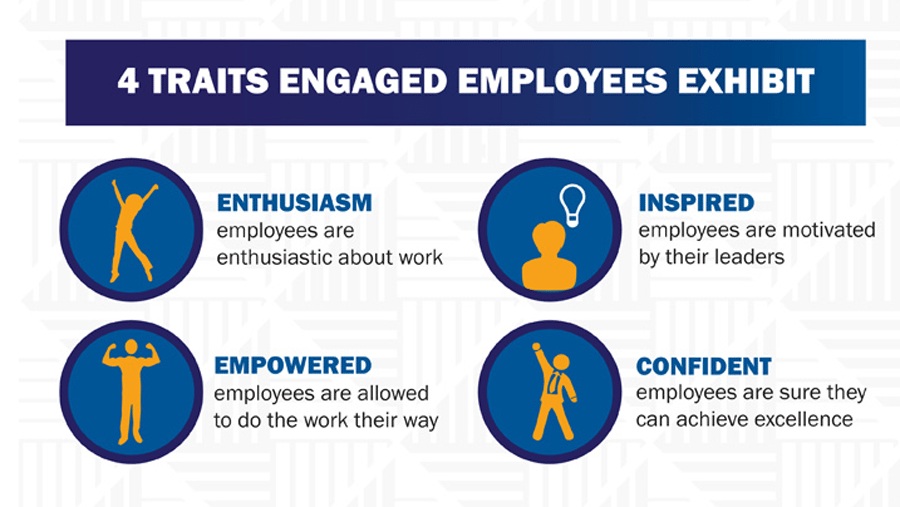So, what makes a good team?
There are a number of theories that bring success to a team (example being Bruce Tuckman’s five stages of Team Development) that have had a positive impact for a range of teams and individuals, but what specifically makes for a successful group?
Creating a working atmosphere brimming with vibrancy is most important. Having a well-balanced and talented team is always made up of a group of close, strong-willed individuals. These types of people hold many positive characteristics that ultimately work towards team success, no matter what is thrown their way.
In this article we will discover 10 characteristics that will positively transform your team’s ability to work together and drive for success.
1. Understanding Goals
The most important aspect for creating a successful team is ensuring that each member of the group is fully aware of the team goals and how they are to be achieved.
Defying this process will allow all members of the team to relate in a positive way to what they’re doing on a day-to-day basis whilst understanding how this will affect the end goal. This sense of purpose is crucial.
Many businesses surprise us by not even setting targets, or if they do they aren’t clear, therefore employees are left to guess their role and responsibilities without anything to work towards.
 2. Purposeful Meetings
2. Purposeful Meetings
Most would agree that meetings for the sake of it can get quite annoying, especially when it comes to holding a serious meeting. Unnecessary meetings often result in undermining the ones that actually matter and have a purpose.
This can be overcome by scheduling meetings with a theme in mind. This will ensure that nobody’s time is wasted and that everybody can take something away from the meeting.
For those acting as the chair of the meeting, here are three important aspects to bear in mind:
- Make it clear from the beginning what the theme of the meeting is
- Be organized by creating a plan beforehand i.e. what will be discussed
- Allow every team member to voice their opinions
There are several ways in which we can make meetings worthwhile for all involved. This LinkedIn article displays 10 ways to make your team meetings more engaging.
3. All Opinions Matter
Following on from the last point, it’s crucial that we each respect and value the opinions of all team members; this will instantly set an example in creating a positive working atmosphere and is one of the simplest ways of getting the team in a positive frame of mind.
There are a number of productive ways to introduce such attitudes, including:
- Group work, create groups that are varied in skill sets in order to learn from one another
- Meetings, present work from each individual and invite a discussion around each, this will increase communication.
- Out of work activities, team building activities, team lunches etc.
4. Encourage Initiative
Togetherness is at the core of any team, that applies whether it’s in a professional atmosphere or not. For a team to truly succeed to its absolute potential, individual initiative needs to be encouraged also.
This doesn’t have to be applied with pressure, polite encouragement goes a long way; and some approaches are more intriguing than others.
A piece published by Marty Fukuda offers 7 easy steps to encouraging initiative in employees – a must read.
5. Trust Judgement
Trusting the judgment of all team members is also important, even if you don’t completely agree with them. Inviting feedback from as many different team members as possible in a constructive environment is important to better communication between team members whilst also displaying that you value what they have to say.
Each team member will be impacting in a different way, this includes:
- Encouraging communication amongst one another
- Employee trust levels are increased
- Encourages honesty throughout the group
- Develops an attitude that is both consistent and mutual
The web offers a number of effective resources with many methods of increasing communication amongst a team, a favorite of ours being 20 ways to communicate effectively with your team.
6. Group Decision Making
Every team displays a number of unique individuals that boast a number of talents, capabilities, and personalities. When each group member is able to express their opinions, the better it’ll be for the overall atmosphere and working environment.
We all have different opinions and thoughts but this can create several alternatives when it comes to making a decision as an entire team, and importantly it allows members to all voice their opinions.
The 7 step decision-making process is a good place to start for beginners:
- Identify a problem
- Gather information
- Analyse the situation
- Create options
- Evaluate alternatives
- Select an alternative
- Act on your decision
7. Risk Taking
Taking your employees out of their comfort zone and encouraging them to take more risks can be a pretty difficult process.
This type of encouragement is often seen for those working within a creative environment but most importantly, failure is okay and this is to be made clear. New challenges are a great way to test this theory, this pushes your team to learn new skills and use initiative with the knowledge that if they don’t succeed the first time, who cares, at least they tried!
This will have a positive impact in regards to engagement levels, which is, in fact, one of the biggest reasons for people leaving their current role. A study conducted by BrightHR revealed 34% of employees choose a job dependant on the working environment rather than leaving for a salary increase (21%).
8. Organised Decision Making
A team that fails to make important decisions as a group can be a pretty lonely place for those not involved. Without an organized process in place, it can get pretty messy.
Creating a plan that works in your team will vary because every team is different, but as long as it contains organization and logical thinking, you’re on the right track.
Mind Tools recently published a video based on decision-making which is worth a few minutes of your time.
Making decisions as a team is vital because every opinion matters as it ensures each group member has a voice and is recognized – important for both motivation and engagement.
9. Encourage Feedback
Getting feedback from team members is an absolute must. When you think about it, feedback is always there whether we want it or not. Every time you ask or receive a question, we communicate by answering with feedback. In a sense, it’s almost impossible to not provide feedback.
Offering constructive feedback on to other individuals can be touchy for certain people, but overall it offers a sense of self-worth and increases motivation. It also makes it easier to discover ways in which specific parts of work can be improved along with overall performance.
When feedback is provided, naturally we feel more valued and appreciated for the work we’re doing, plus it’s also one of the most effective forms of listening.
10. Team Acceptance
No two people within a group are exactly the same in what they do and say. Therefore, small misunderstandings can often get in the way of achieving our end goals.
So, how can we easily summarise team acceptance? In a nutshell, it’s by embracing every person for who they are and what they believe in, regardless of cultural differences and experiences.
Accept – embrace – success.













